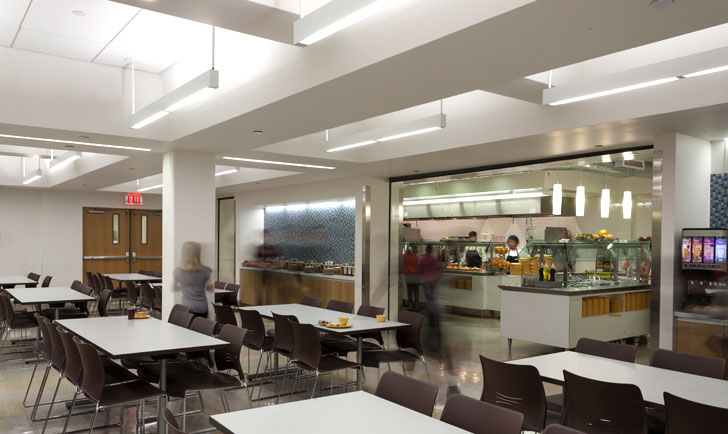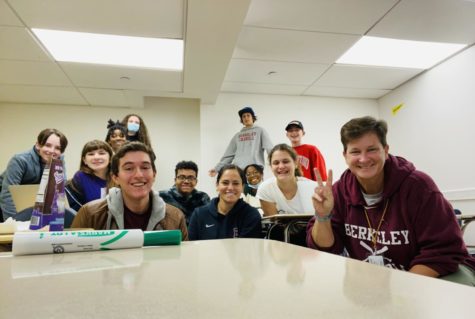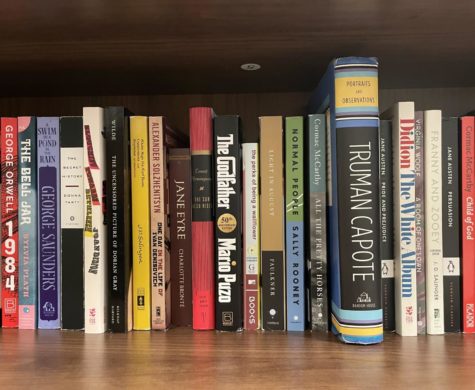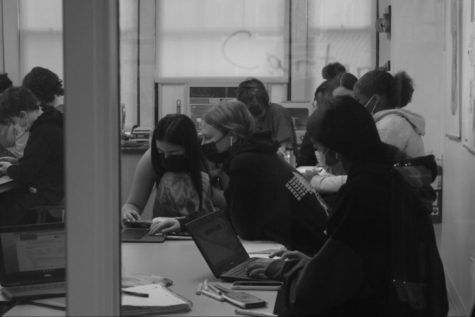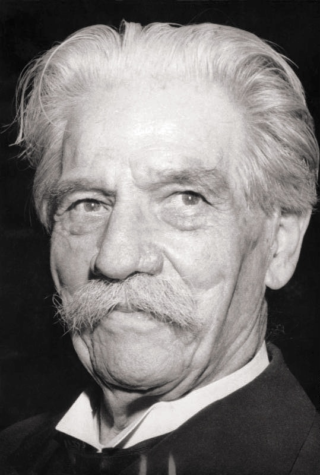Food! Food! Food!: A Look into the Meals Made at BC
Each day, the halls rumble with hungry students swiftly walking to the cafeteria. As they enter, they see a vast amount of tables on their right and utensils on their left. They progress even further to find a salad bar, sandwich bar, and a hot meal bar. As quickly as pollinating bees buzzing to the first Spring flower they find, the students make their decision and get a hot meal. In this recurring cycle, not only are students faced with thinking about what they want to eat, but they must also consider where this food comes from and how it’s made. Some might even continue to think about how other students, teachers, and chefs perceive the food that is made in Berkeley Carroll. In order to provide answers to these topics, we got the inside scoop on how the food at BC is made.
Students and faculty were first asked to give their opinion on the cafeteria food, its menu, and nutrition. Many said that the food provided great variety and was able to accommodate everyone’s needs. Robert Vitalo, the Head of School, stated that “There is a lot of choice, but food is personal. Some people like cold salads, but I might not like them. It doesn’t mean it’s bad.” The trend of food being personal appeared often, but unlike Mr. Vitalo, some students thought that the food could be simpler. An anonymous student added that “Cooking is important to me and eating out is never the same as eating at home. The food here can be simpler. For instance, they can add more pasta dishes.” When students were asked about what they would like to see on the menu, many also answered that they would like “more pasta.” Some students and faculty further noted that they would like to change having pizza every Friday to having it every other week. Not only did students talk about the menu, but they also brought up spicing. For instance, junior Jessica Gould thought that meals should contain less spices: “They use too much salt and pepper sometimes. The food might need flavor, but adding pepper and salt does not create this flavor.” This statement was controversial because people like their food to be spiced differently. After discussing the school menu and spices, students and faculty were asked to comment on the food’s nutrition. Because the school provides a salad bar, sandwich bar, and fruits every day, there was consensus among students and faculty that the food is healthy. James Shapiro, the Middle School Director, stated that “There are cold cuts and rolls!” Mr. Vitalo remarked, “The food source is healthy. I’m on a salad, chickpea, hard boiled egg, tofu kick.” The students also think that the food is healthy, as a junior stated, “There are always vegetables, fruits, and greens available. I can always find something great to eat!” All of these opinions on the cafeteria food resemble what students and faculty think.
After taking account of these opinions, the chefs took time to describe the planning and work they put into making food at BC. Chef Bruce Scandura, the head chef in our school’s kitchen, explained the process of choosing meals for BC’s daily lunch menu: “Everything is delegated out through the course of the entire menu. Varian is in charge of the deli while Selima does colds and salads. And Blanco makes the morning snacks.” Chef Bruce even talked about how BC’s lunches are often culture-themed. “I try to touch upon different cultures. I’ll go onto world calendars and see if they have holidays; it’s like an experience [for the students],” he explained. By exposing the BC community to different food cultures, chef Bruce hopes for people to learn something from the meals they eat every day. Besides the themes of world cultures, the kitchen staff every now and then serves lunch meals inspired by famous movies. In preparation for Thanksgiving, the 2013 animated film Freebirds was referenced on our school lunch menu just days before. In early December, the kitchen served chicken shawarma, a meal featured in the 2012 film The Avengers. A story can be found behind every meal eaten at BC!
If these meals are looked at closer, some may wonder where their ingredients come from. Chef Bruce was able to provide background on the produce used in the kitchen: “The vegetables come from local areas in New York, but can go up to [areas in] Massachusetts.” The ground beef used to make our burgers and Sloppy Joes is a local “all natural angus product,” and the milk we drink to accompany Office Hours muffins comes from Upstate New York. It is clear that chef Bruce and the kitchen staff “will always go for a local option” when buying the school’s necessary produce (a list of the local farms/bakeries from which we buy our produce can be found at the end of this article). While keeping “everything nutritionally balanced” for school meals, the kitchen staff does their best to obtain natural and fresh ingredients.
For every story that is found behind a cooked meal, there is also a story behind every chef. As we have learned from Disney Pixar’s Ratatouille, chefs are “artists” and “pirates,” they are “more than cooks.” This idea was supported after having interviewed chef Bruce about his own background. “I have always had an interest [in cooking].” At the early age of four years old, chef Bruce helped cook with his mother and had written “a cookbook using crayons and construction paper, on how to make scrambled eggs.” In 1990, he graduated from the Culinary Institute of America and “was recruited to work at law firms in what they call corporate dining.” For a while, he worked in the business field until he got involved with the school lunch system at the Kew-Forest school in Queens, NY. It was then that he realized working in a school community with “parents and students talking to and thanking [him] was more humane” than the business environment. One of the main reasons why chef Bruce had always been interested in cooking was because he associated food with family. “Food was essential during family gatherings, and [at those times] everyone was happy.” He finds great comfort in the “large sense of community” that comes from working at a school. Chef Bruce, a businessman, chef, and family man, knows that food can always bring a person back home.
Every day members of the BC community eat lunch that is well-prepared by the same group of staff members. This is a list of the chefs and their duties:
Selima Hinds – Catering and Salad Bar
Evangelisto Blanco – Cook and Service
Varian Hill – Deli, Beverage, and Service
Jose Perez – Potwasher
Kevin Jackson – Dishwasher
Carmen Ramirez – Sous Chef
Bruce Scandura – Chef Manager
Chef Bruce leads this group to make sure students and faculty do not go off to their next period on an empty stomach. The entire kitchen staff greatly deserve recognition for the work and effort they put into serving school meals. Chef Bruce and the staff know that all of their work is worth it. “It makes me happy to see people happy when they eat something I make,” chef Bruce gladly stated.
So every time students drop their bags off and run downstairs to get food from the cafeteria, they can be sure that a variety of nutritious food is always waiting for them. And when students and faculty sit together eating, talking, and laughing, the chefs can be sure that their food is appreciated and that it does bring everyone together.
Locations of Food Sources:
Black Horse Farm, Athens, NY – cucumbers, summer squashes, snap peas, broccoli, cauliflower, corn, pumpkins
Rottkamp Farms, Riverhead, Long Island, NY – strawberries, tomatoes, green beans, summer squashes, cucumbers, cantaloupes, watermelons, corn
Satur Farms / Koppert Cress, Cutchogue, North Fork, Long Island, NY – specialty greens (micro greens, spring mix lettuces, baby arugula, baby spinach), baby vegetables, herbs
Schmidt’s, Southampton, NY – all varieties of apples, apricots, plums, cherries, cider
Deer Run Farms, Riverhead, Long Island, NY – cabbages and lettuces
Hudson River Fruit, Milton, NY – plums, apples, pears, & cider
Red Jacket Orchards, Geneva, NY – all varieties of apples, apricots, plums, cherries, peaches, cider
Mountain Sweet Berry Farms / Berried Treasures, Roscoe, NY – blueberries, fava beans, French beans, raspberries, snow peas, strawberries, potatoes
Turek Farms, King Ferry, NY – corn, radishes, squashes, green beans, cabbages
Lynn-Ette Farms, Kent, NY – apples, cabbages, corn, cucumbers, nectarines, peaches, pears, baby spinach, squashes, green beans
Fantasy Fruit, Afton, NY – blueberries, grapes, raspberries, strawberries
Lucky Dog Farms, Hamden, NY – lettuces, tomatoes
Ronnybrook Farm Dairy, Ancramdale, NY – 2% & low fat chocolate milk in dispenser, whole milk & half n’ half for catering, heavy cream for kitchen
Rockland Bakery, Rockland, NY – sliced breads, French bread, Kaiser rolls, hamburger buns, hot dog rolls
Just Bagels Inc., Bronx, NY – bagels
Viola Bakeries, Brooklyn, NY – mini muffins & danish for catering
Morrisons Pastry, Flushing, NY – yogurt loaves for catering
Brooklyn Brine Co., Park Slope, Brooklyn, NY – deli pickles
Meyer Premium Meats, Loveland, CO – natural Angus ground beef & burgers

